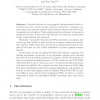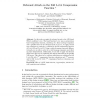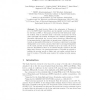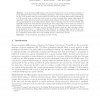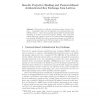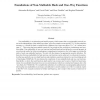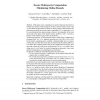93
Voted
ASIACRYPT
2009
Springer
15 years 7 months ago
2009
Springer
Abstract. Physical attacks on cryptographic implementations and devices have become crucial. In this context a recent line of research on a new class of side-channel attacks, calle...
95
Voted
ASIACRYPT
2009
Springer
15 years 7 months ago
2009
Springer
In this work, we apply the rebound attack to the AES based SHA-3 candidate Lane. The hash function Lane uses a permutation based compression function, consisting of a linear messag...
ASIACRYPT
2009
Springer
15 years 7 months ago
2009
Springer
The hash function Skein is the submission of Ferguson et al. to the NIST Hash Competition, and is arguably a serious candidate for selection as SHA-3. This paper presents the firs...
ASIACRYPT
2009
Springer
15 years 7 months ago
2009
Springer
Group encryption (GE) schemes, introduced at Asiacrypt’07, are an encryption analogue of group signatures with a number of interesting applications. They allow a sender to encryp...
134
click to vote
ASIACRYPT
2009
Springer
15 years 7 months ago
2009
Springer
Abstract. We describe a public-key encryption scheme based on lattices — specifically, based on the hardness of the learning with error (LWE) problem — that is secure against ...
104
click to vote
ASIACRYPT
2009
Springer
15 years 7 months ago
2009
Springer
A universally composable (UC) blind signature functionality requres users to commit to the message to be blindly signed. It is thereby impossible to realize in the plain model. Th...
68
Voted
ASIACRYPT
2009
Springer
15 years 7 months ago
2009
Springer
116
Voted
ASIACRYPT
2009
Springer
15 years 7 months ago
2009
Springer
Computational puzzles are mildly difficult computational problems that require resources (processor cycles, memory, or both) to solve. Puzzles have found a variety of uses in secu...
101
click to vote
ASIACRYPT
2009
Springer
15 years 7 months ago
2009
Springer
Non-malleability is an interesting and useful property which ensures that a cryptographic protocol preserves the independence of the underlying values: given for example an encryp...
122
click to vote
ASIACRYPT
2009
Springer
15 years 7 months ago
2009
Springer
Multi-party secure computations are general important procedures to compute any function while keeping the security of private inputs. In this work we ask whether preprocessing can...
